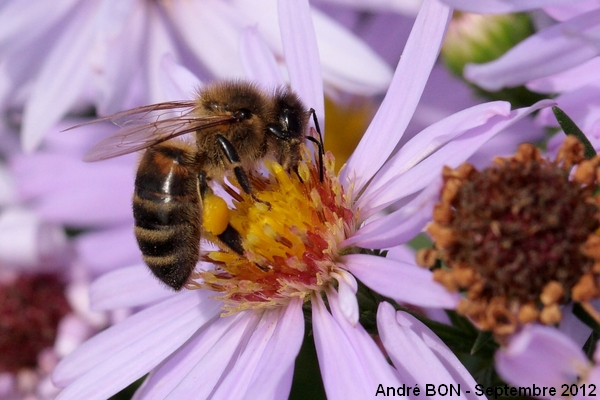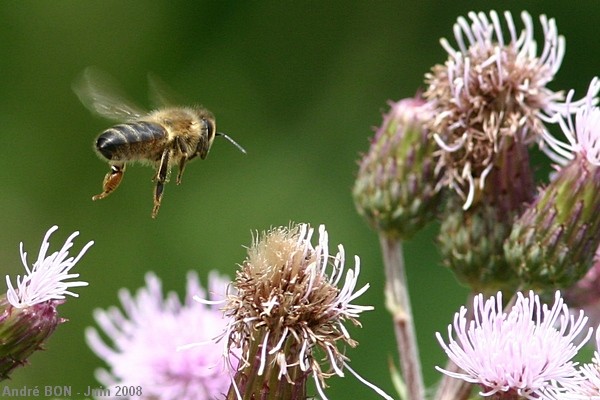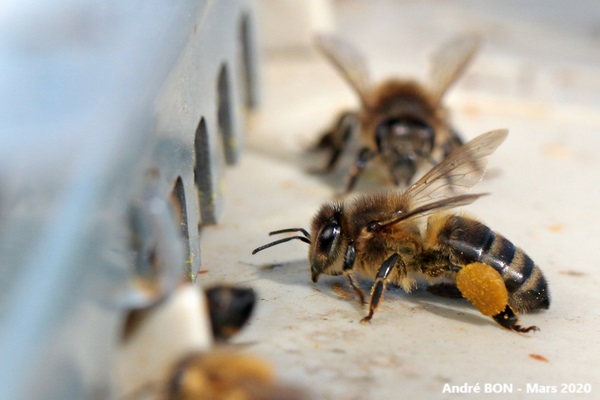



| Western Honey Bee (Apis mellifera (Linnaeus, 1758)) |




|
|
Scientific name: Apis mellifera (Linnaeus, 1758) Common name: Western Honey Bee French name: Abeille européenne, Abeille domestique, Mouche à miel Order: Hymenoptera Family: Apidae Wingspan : Worker bees measure about 12 mm, drone bees measure from 15 to 16 mm and the queen measures from 16 to 20 mm. Biotope: This species essentially lives in beehives made by beekeepers. There are very few wild colonies of bees, usually in tree holes. Geographic area: All the temperate and tropical regions. Introduced to America from Europe. Observation period : All year long. You mainly see worker bees during flower periods. Honey bees which overwinter can live 6 months and feed on nectar and honey stored inside the beehive. Drone bees live from May to July. |
The Western Honey Bee has a hairy body. It shows black and pale yellow stripes. The Western Honey Bee feeds on pollen, nectar and honey. The queen is fed on royal jelly. Worker bees collect pollen and nectar and feed the queen and the drone bees. They bear pollen basket on their hind legs to carry collected pollen. Honey bees play an important role in maintaining plant biodiversity. Bees help on plant pollination by carrying pollen from one flower to another. Some workers fly away to look for pollen. They inform other worker bees with dances coding the information. Worker bees can sting to protect the beehive. They cannot withdraw their barbed stinger. They tear the tip of their abdomen and die a short time after. |
| [To know more about the Western Honey Bee] [Next picture] [Top] |

|
The high number of Honey bees which are used to visiting this tuft of Aster flowers must certainly come from the beehives located about 1 km from here. You can clearly see, on this picture, the pollen basket on the hind legs. |
| [To know more about the Western Honey Bee] [Next picture] [Previous picture] [Top] |

|
After many unsuccessful tries, here is a picture of a Western Honey Bee in flight. This is only a rear view, do not expect too much from the first almost sharp picture ... |
| [To know more about the Western Honey Bee] [Next picture] [Previous picture] [Top] |

|
I became an amateur beekeeper in 2017. It is always a pleasure to observe the comings and goings of the bees. This time I approached very close to the flight board with my macro lens. I had to act very quickly to avoid being stung. The protective suit does not allow the use of the viewfinder of my SLR camera. |
| [To know more about the Western Honey Bee] [Previous picture] [Top] |
|
February is here, the days are getting longer. The queen begins to lay eggs in the hive again. Hazel trees and alders are covered with catkins filled with pollen. The workers take advantage of the sunny day to collect pollen and transport it into the hive on the baskets of their hind legs. This pollen will be used to feed the larvae which will form the next generation. |